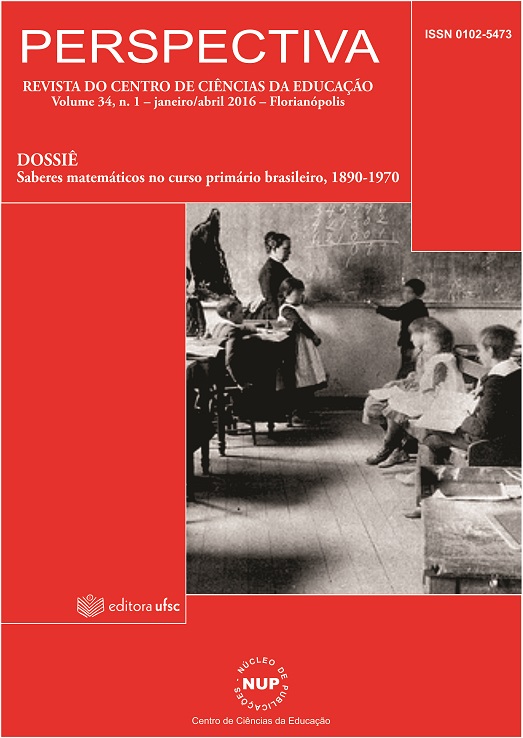A geometria como disciplina do curso de formação de professores primários: a influência do método intuitivo nas primeiras décadas do século XX no Brasil
DOI:
https://doi.org/10.5007/2175-795X.2016v34n1p102Resumo
O artigo discute o papel da geometria na formação de normalistas no início do século XX, quando o ensino primário se estrutura no Brasil com o apoio do método intuitivo. A geometria vista como um saber a ensinar trataria suporte, para além dela mesma, ao ensino das formas, essencial na perspectiva intuitiva de conhecimento. Pelos pressupostos do método intuitivo, a aprendizagem inicia-se pelas sensações, pelos órgãos dos sentidos. Assim, observar, tocar, sentir e, enfim, nomear são processos fundamentais. Para Pestalozzi, a intuição no método elementar não se restringe à simples impressão sensível causada pelas coisas. Sendo assim, carece de fazer agir uma arte da intuição pela qual participam os elementos fundamentais que permitem o conhecimento: a forma, o número e o nome. O modelo de formação de professores baseado na arte de ensinar, que supunha a observação de bons modelos de ensino, é reforçado com a publicação de revistas pedagógicas que funcionariam como uma caixa de utensílios na qual as lições seriam dedicadas aos professores, fornecendo um conhecimento para ensinar.
Downloads
Publicado
Como Citar
Edição
Seção
Licença
Esta revista proporciona acesso público a todo seu conteúdo, seguindo o princípio de que tornar gratuito o acesso a pesquisas gera um maior intercâmbio global de conhecimento. Tal acesso está associado a um crescimento da leitura e citação do trabalho de um autor. Para maiores informações sobre esta abordagem, visite Public Knowledge Project, projeto que desenvolveu este sistema para melhorar a qualidade acadêmica e pública da pesquisa, distribuindo o Open Journal Sistem (OJS) assim como outros software de apoio ao sistema de publicação de acesso público a fontes acadêmicas. Os nomes e endereços de e-mail neste site serão usados exclusivamente para os propósitos da revista, não estando disponíveis para outros fins.
A Perspectiva permite que os autores retenham os direitos autorais sem restrições bem como os direitos de publicação. Caso o texto venha a ser publicado posteriormente em outro veículo, solicita-se aos autores informar que o mesmo foi originalmente publicado como artigo na revista Perspectiva, bem como citar as referências bibliográficas completas dessa publicação.



